If you’re curious about some of the animals with three-letter names that we share our planet with, you’ve come to the right place. Across the animal kingdom, from insects to fish, reptiles to birds, and mammals, you’ll find animals with three-letter common names.
In this guide, we’ll present 23 awesome animals with three-letter names. Read on to learn more!
1. Cat
The cat, of the Felidae family, has reached icon status across many human cultures for thousands of years. One of the most popular companion animals on the planet, domestic cats (Felis catus), cozy up on our couches, perform ridiculous antics around the house and root out mice on farms. These crafty, beautiful, and mischievous critters have fully integrated into the lives of millions of people across the world. Other members of the cat family remain wonderfully wild and elusive, such as the big cats of the Panthera genus- lions, tigers, leopards, snow leopards, clouded leopards, and jaguars.

The domesticated cat has been part of human cultures around the world for thousands of years.
©Seregraff/Shutterstock.com
2. Pig
Not limited to just the domestic pig, Sus domesticus, the genus Sus in the Suidae family contains nine other delightful pig species. These include the wild boar (Sus scrofa), the bearded pig (Sus barbatus), and the warty pig (Sus verrucosus). As an even-toed ungulate mammal, the pig is a member of the Artiodactyla order. They are native to Eurasia and northern Africa. Pigs are incredibly smart critters, develop intricate social relationships, and use a range of vocalizations to communicate and express emotions.
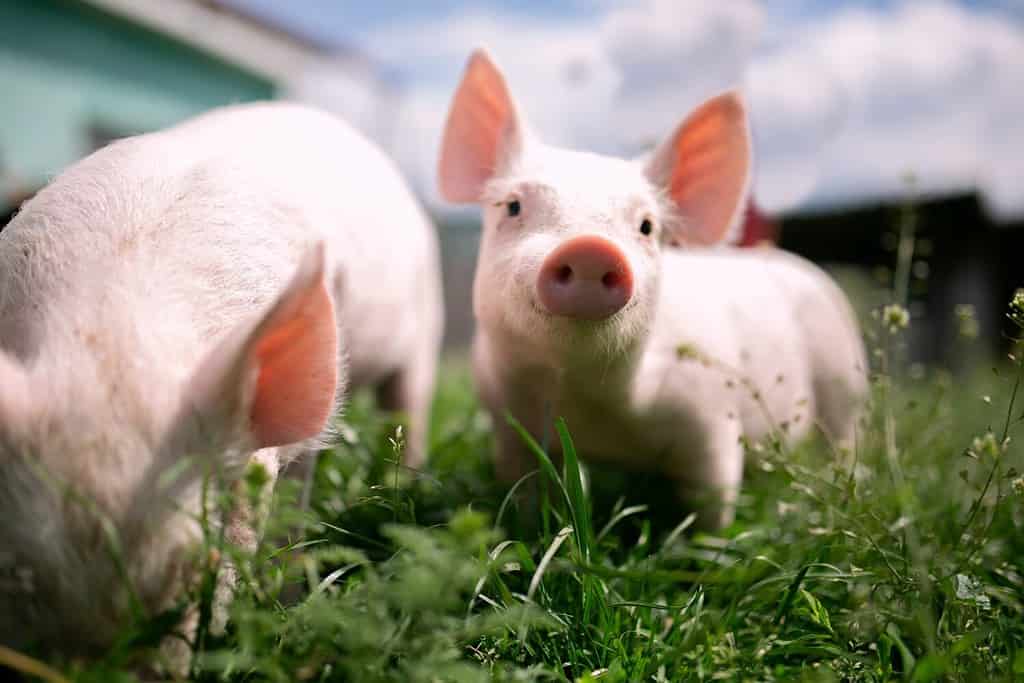
Pigs are smart, social, and adorable even-toed ungulates of the Artiodactyla order.
©Bogdan Cherniak/Shutterstock.com
3. Ram
Ram is the name for male sheep, both domesticated and wild. In North America, there are three species of wild sheep- bighorn sheep, the Dall sheep, and Stone’s sheep. The big horn sheep is perhaps the most famous owing to the magnificent, curling horns on the bighorn sheep rams. The ram can use these horns for defense against predators, fighting against other rams, and even breaking open cacti. Bighorn sheep rams can weigh over 350 pounds and stand up to about 40 inches tall at the shoulders.
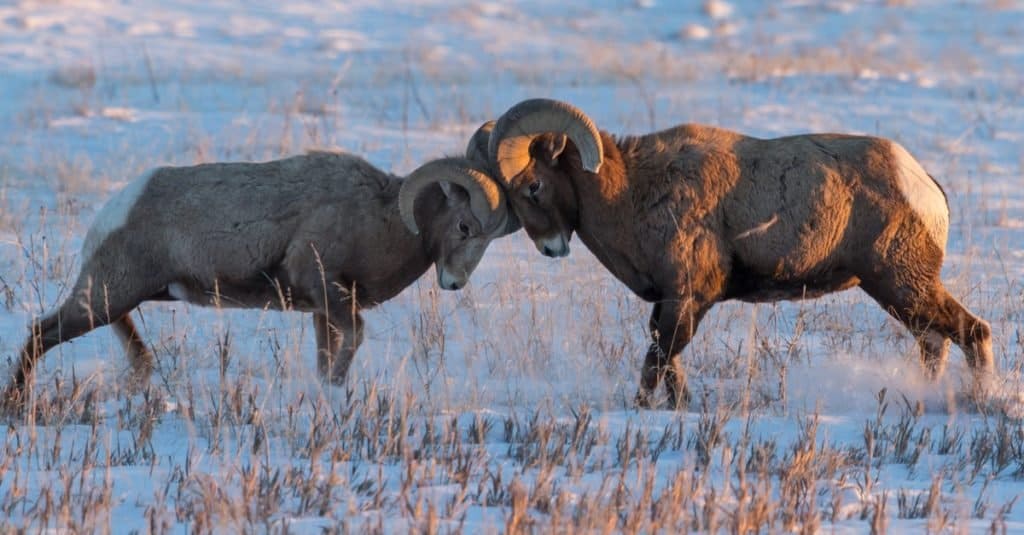
A bighorn ram can use his horns to compete during mating season.
©Warren Metcalf/Shutterstock.com
4. Bat
The bat represents the second largest order of mammals, following rodents, with over 1,400 species. These adorable, furry, winged mammals play several crucial roles in the many ecosystems they inhabit. They pollinate flowers, spread seeds, and keep insect populations in check across the six continents they natively inhabit. With a wingspan of over five feet, the golden-crowned flying fox (Acerodon jubatus) is one of the largest bat species in the world. Over 200 species of bats across 60 countries are threatened and 21 of those are critically endangered. Protecting the global population of bats is critical to a healthy planet.
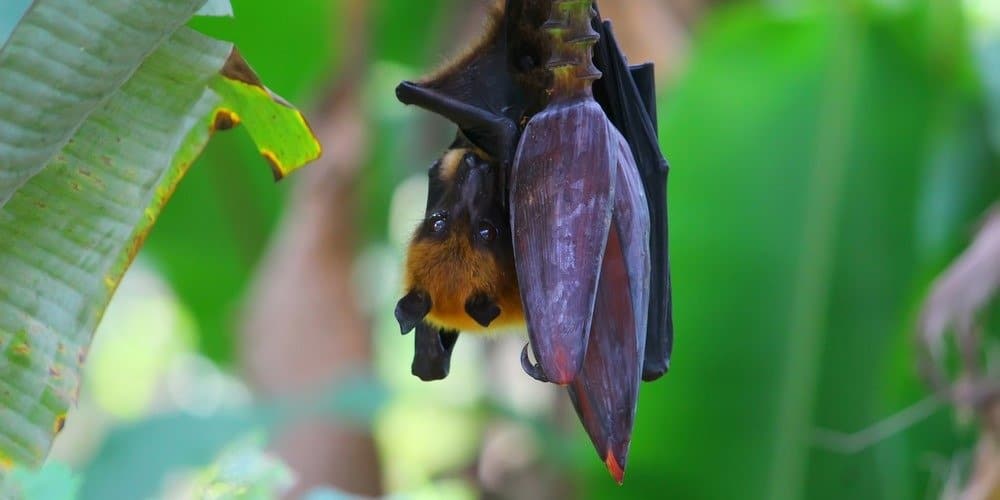
There are over 1,400 species of bats worldwide, making them the second-largest order of mammals.
©OREON Digital Composition/Shutterstock.com
5. Gnu
The gnu is a type of African antelope. The other common name for a gnu is wildebeest. Gnus share the Bovidae family with other antelope, cattle, bison, buffalo, and caprine. There are two species of gnus- the white-tailed gnu (Connochaetes gnou) and the brindled gnu (Connochaetes taurinus). These animals are native to southern and Eastern Africa, ranging from Kenya to Namibia. They are the largest of all antelope species, with the larger brindled gnu topping the scales at over 600 pounds.
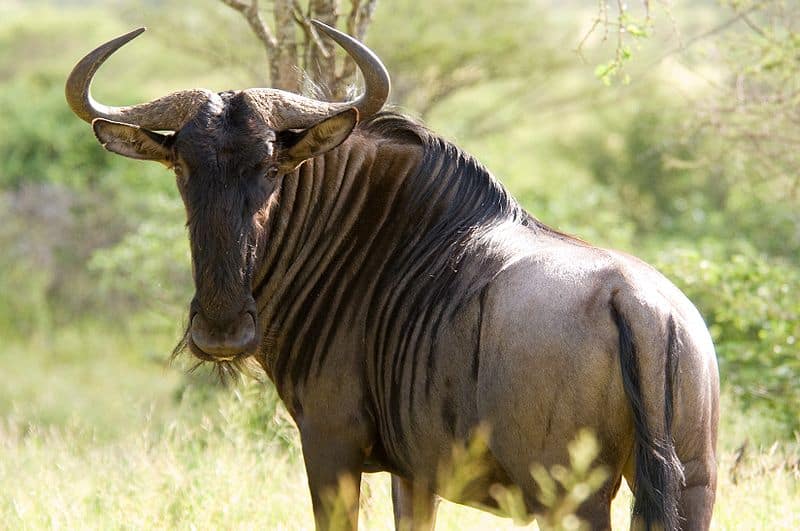
The brindled gnu, able to weigh over 600 pounds, is the largest of all antelope species.
©Chris EasonCamera location24° 45′ 57.79″ S, 31° 53′ 31.74″ E View this and other nearby images on: OpenStreetMap-24.766054; 31.892150, CC BY 2.0, via Wikimedia Commons – License
6. Ray
The ray belongs to a superorder of cartilaginous fish, Batoidea. The subclass of this order, Elasmobranchii, is comprised of rays and their close relatives, sharks. There are over 630 identified species of rays on the Earth, including the commonly-known group of stingrays. They are found in all of the world’s oceans. Their diets are quite varied among species. The giant manta ray (Manta birostris), for example, feeds primarily on planktonic organisms. Conversely, the Atlantic stingray (Hypanus sabinus) feeds on invertebrates, crustaceans, shrimp, crabs, mollusks, and small fish.

Rays populate all the oceans of Earth.
©iStock.com/Rob Atherton
7. Fox
The fox is a member of the canine family, Canidae. There are over 23 species of foxes across 6 genera. In North America, there are four species- the red fox (Vulpes vulpes), the gray fox (Urocyon cinereoargenteus), the arctic fox (Vulpes lagopus), and the kit fox (Vulpes macrotis). As a family, the fox can survive in a range of environments from tundra to temperature forests and deserts. The red fox, native across the entire Northern Hemisphere, actually has the widest geographical range of any species in the Carnivora order. Like many in the Canidae family, they also have an adaptable diet, including but not limited to small, fresh-caught prey, carrion, insects, berries, grains, and fungi.
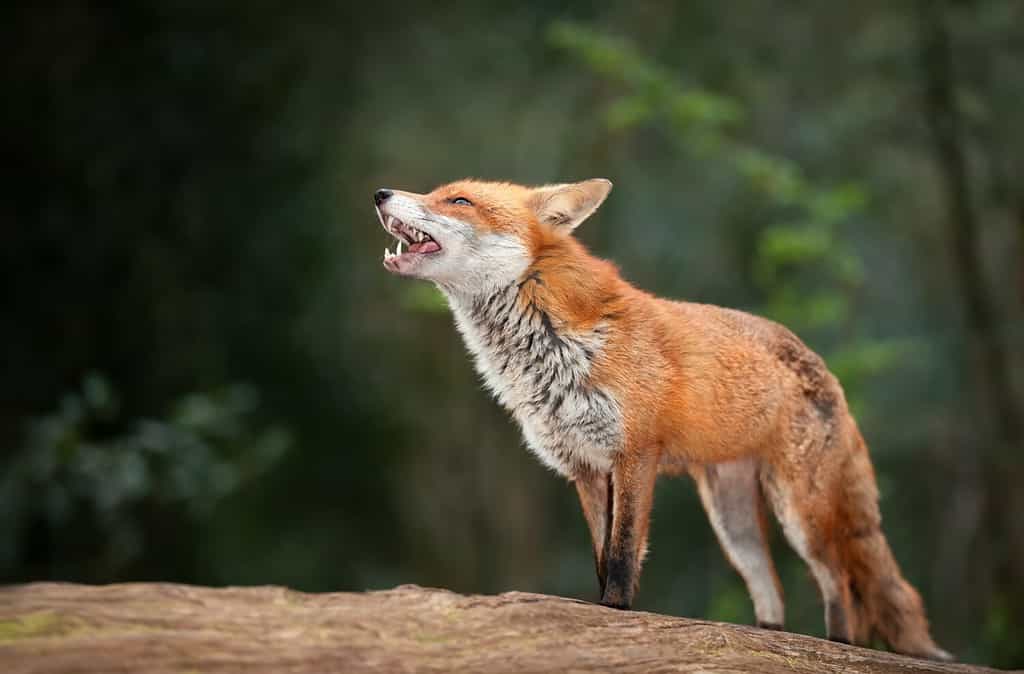
The red fox enjoys a wide native range across the entire Northern Hemisphere.
©Giedriius/Shutterstock.com
8. Ant
Three-letter animals of the insect world? There are a couple of ’em on this list. The ant, of the Formicidae family, is one of the most abundant animals on our planet. They belong to the Hymenoptera order of insects which includes bees and wasps. This massive insect family is categorized into about 300 genera with over 12,000 currently identified species. These insects live in complex social groups, called colonies. They communicate and navigate by leaving and following pheromone trails. Ants also use their antennae to communicate with each other and explore their surroundings. Currently, the largest identified ant species in the world is the giant Amazonian ant (Dinoponera gigantea), which can measure up to 1.6 inches long.
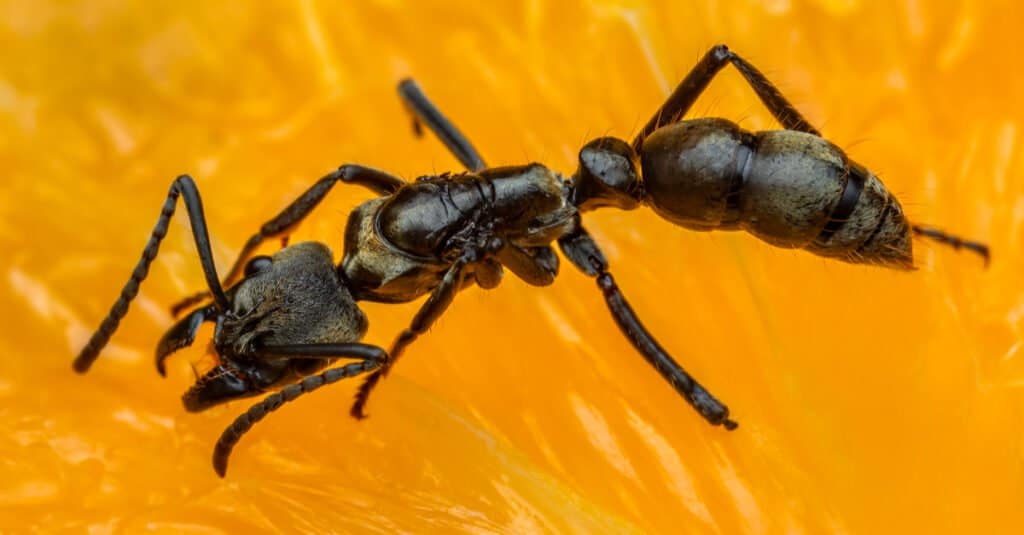
The giant Amazonian ant is one of the largest ant species on the planet.
©Javier Chiavone/Shutterstock.com
9. Rat
The rat is a highly intelligent and social mammal of the genus, Rattus. This genus includes what is considered to be the “true rats”. The fancy rat (Rattus norvegicus domestica) is the most common type of companion rat. As companion animals, rats are known to be cuddly, mischievous, playful, and highly intelligent. The typical lifespan for a healthy fancy rat is about 2-3 years. In rural and remote areas, wild rats tend to primarily eat fruit, vegetation, and seeds. In suburban and city environments, they are more likely to include sources of meat in their diet such as dog or cat food.
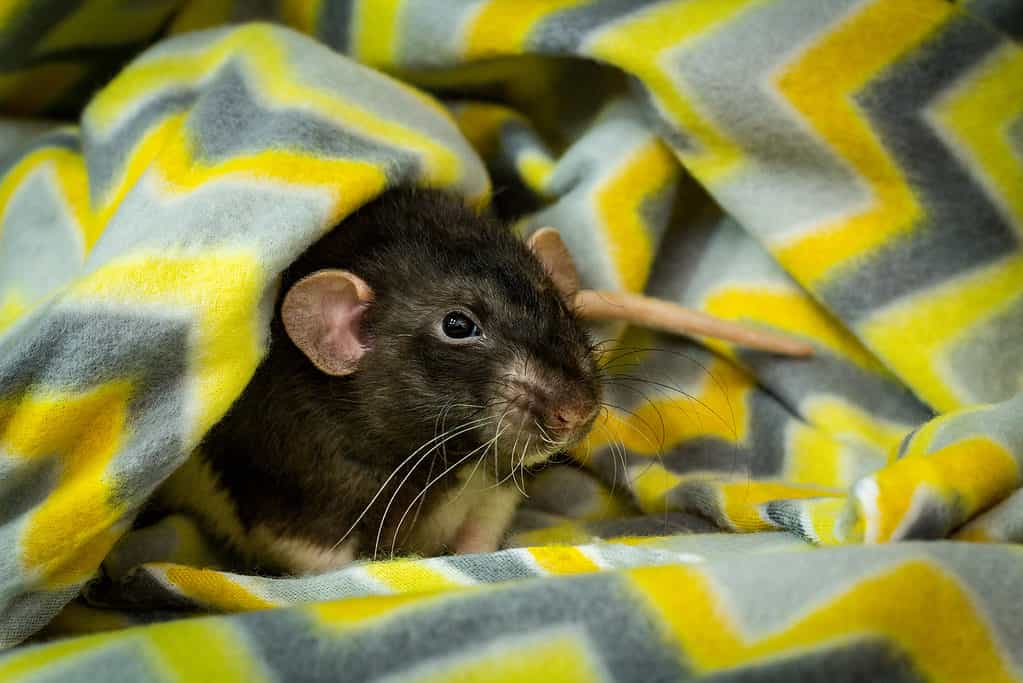
Highly intelligent and social, companion rats often enjoy being snuggly and playful with their human pals.
©iStock.com/EzumeImages
10. Cod
Cod are a type of ray-finned fish, belonging to the Gadus genus of true cods. There are other fish species some consider to be cod outside of the Gadus genus of “true cods”. Depending on the taxonomer, there are three or four species within the Gadus genus. The most common in this genus are the Atlantic cod (Gadus morhua) and the Pacific cod (Gadus macrocephalus). In their native range, these fish are a staple seafood and source of liver oil.

Cod are a staple seafood source for many people living on the coasts of the Atlantic and Pacific Oceans.
©Miroslav Halama/Shutterstock.com
11. Dog
Of course, a list containing animals with 3-lettered names wouldn’t be complete without mentioning human’s best friend- the dog. Dogs belong to the canine family, Canidae. They share this family with other carnivorans including foxes, wolves, and coyotes. The exact time frame of when the domesticated dog (Canis familiaris), officially arrived on the scene is debated by researchers, but they’ve been around as a distinct species for at least 10,000 years.
The domesticated dog is often fully integrated with their human families. Others, such as street dogs, have mastered the art of living with human society by scavenging, begging for food, and appealing to our empathy. Currently, according to the largest international registry of dog breeds, there are about 340 recognized breeds of the domesticated dog.

The domesticated dog is fully woven into the lives of humans around the world.
©gruzova.photo/Shutterstock.com
12. Elk
The elk (Cervus canadensis) is one of the largest species of deer in the Cervidae family. Their native range covers North America and Central and East Asia. In North America, four subspecies of elk remain in the wild- the Roosevelt elk, Tule elk, Rocky Mountain elk, and the Manitoban elk. Until recently, elk were considered a subspecies of European red deer (Cervus elaphus), but modern genetic studies place them in their own species.
A healthy elk population needs about 2,500-10,000 acres to roam and forage. Each individual typically needs to consume about 3 lbs of food for every 100 pounds of body weight. Their diet includes grasses, twigs, leaves, shrub vegetation, bark, pine needles, and lichen.
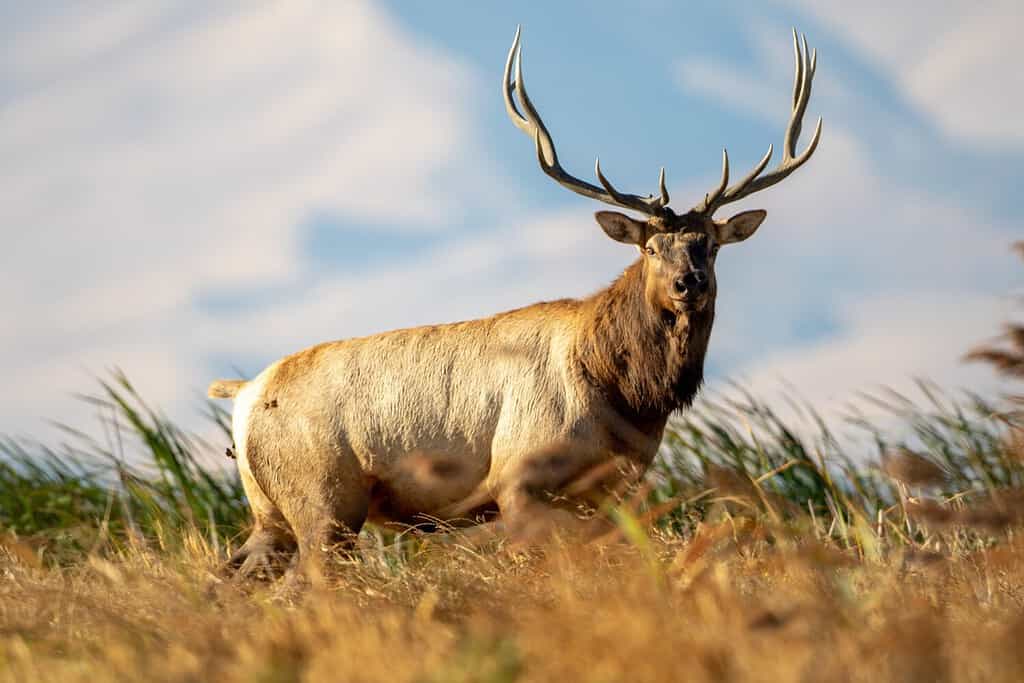
The elk is one of the largest species of deer in the world.
©RelentlessImages/Shutterstock.com
13. Bee
A crucial pollinator, the bee is vital to the health of our global ecosystems. Bees belong to the order Hymenoptera, along with wasps and ants. As with other members of this order, the bee has four life stages- egg, larva, pupa, and adult. Over 16,000 species of bees are categorized across seven families. Without bees, the diversity of fruit across the world could plummet.
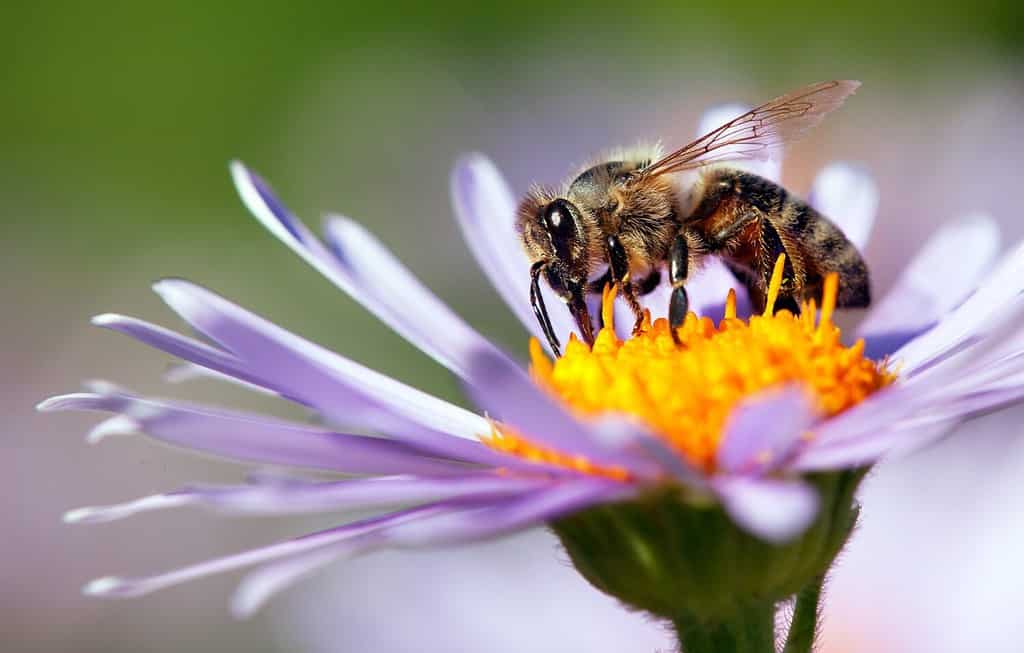
Bees are an incredibly, and globally, important group of pollinators.
©Daniel Prudek/Shutterstock.com
14. Olm
The olm is a species of blind cave salamander. These otherworldly critters spend their entire lives in the freshwater habitat of central and southeastern European caves. The olm (Proteus anguinus) is the only species in the Proteus genus, belonging to the Proteidae family of aquatic salamanders. This salamander is completely adapted to life in its cavernous environment. Their bodies lack any pigment and they have highly developed senses of smell, taste, hearing, and electro-sensitivity. This incredible animal can live without food for up to 10 years and has a lifespan that can reach up to 100 years.
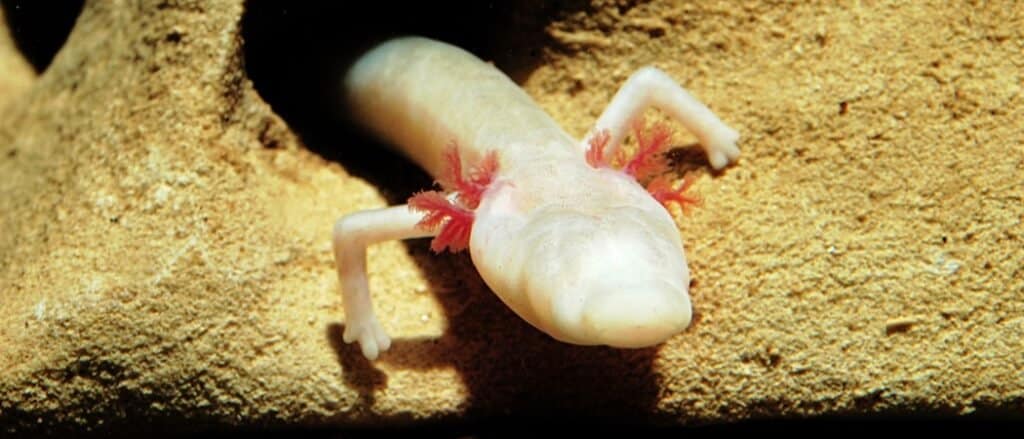
Lacking sight, the olm has developed a heightened sense of hearing, taste, smell, and electro-sensitivity.
©lucacavallari/Shutterstock.com
15. Fly
The fly is categorized in the two-winged order of insects, Diptera. The flies in this order are also known as true flies. They include some well-known species such as the American horse fly (Tabanus americanus), fruit fly (Drosophila melanogaster), and the house fly (Musca domestica). Overall, this enormous order of insects includes over 110,000 describes species across the world. Many of these insects are short-lived. The house fly, for example, has an average life expectancy of 15-30 days.

There are over 110,000 species of flies across the world.
©nechaevkon/Shutterstock.com
16. Eel
Over 800 species of eel exist across 19 families and 111 genera. These fish are characterized by having an elongated, snake-like body. Species of eel exist in both fresh and saltwater environments. Electric eels, comprising three species in the Electrophorus genus are some of the most famous worldwide. Electric eels can produce powerful electric shocks that can stun prey and ward off predators. Moray eels are another incredible species that possess two sets of jaws- the oral and pharyngeal jaws- the latter of which aids in gripping and swallowing.
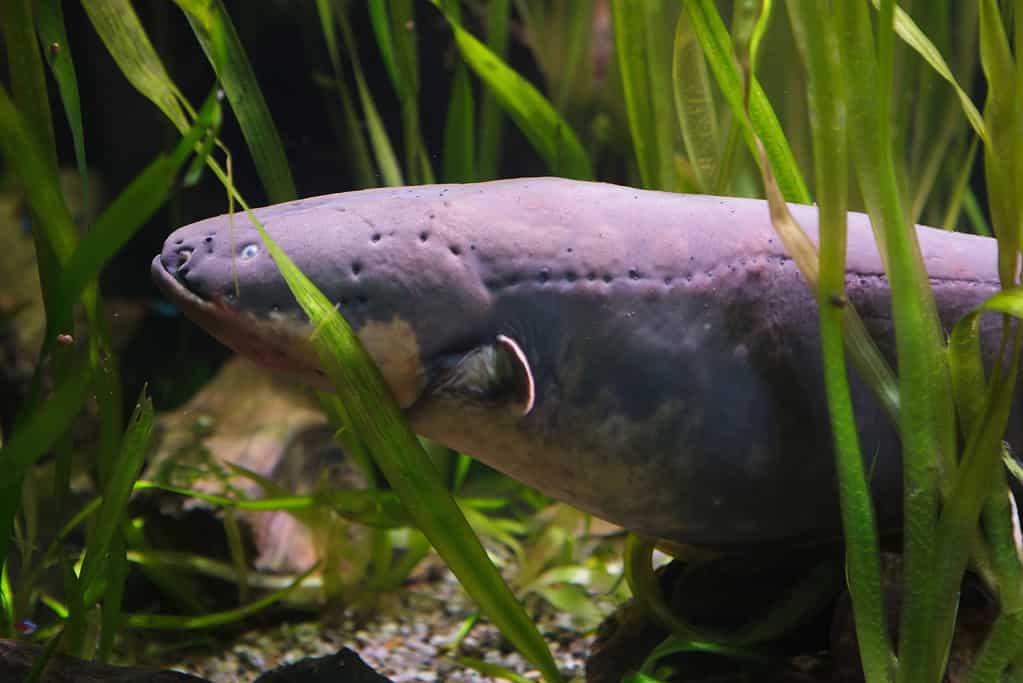
There are over 800 species of eel across 19 families scattered across fresh and saltwater environments.
©Vladimir Wrangel/Shutterstock.com
17. Asp
What about three-letter animals of the snake variety? The asp (Vipera aspis) is a venomous snake hailing from southwestern Europe. As the genus, Vipera, suggests, this snake belongs to the viper family, Viperidae. This interesting snake lives in forested regions and features a distinctly upturned snout. The asp generally reaches about 2 feet long and can live 15-20 years in the wild. They predate on rodents, reptiles, amphibians, and birds.

The asp (
Vipera aspis) features a distinctly upturned snout.
©Ibonoses, CC BY-SA 4.0 <https://creativecommons.org/licenses/by-sa/4.0>, via Wikimedia Commons – License
18. Owl
The owl is part of the Strigiformes order, which includes primarily solitary and nocturnal birds of prey. Across the world, there are about 250 species, and they inhabit every continent except Antarctica. In North America alone, there are about 20 species of owls, the smallest of which is the precious and teeny elf owl (Micrathene whitneyi). As birds of prey, owls are obligate carnivores, hunting a range of small mammals, fish, reptiles, amphibians, birds, and invertebrates to survive.
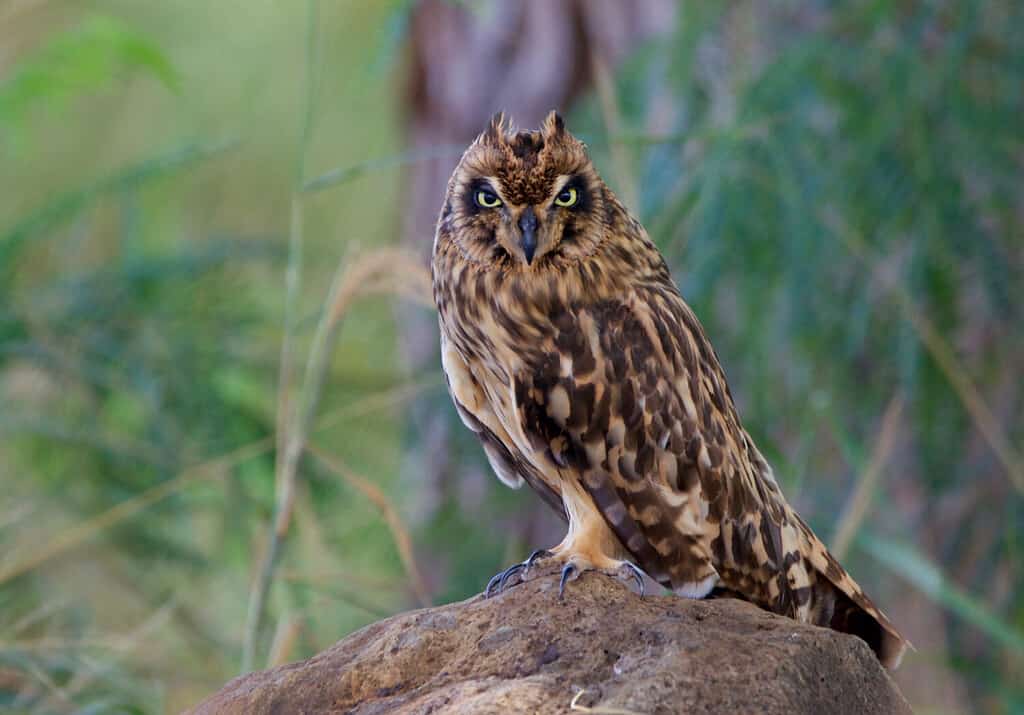
Owls are highly effective, nocturnal hunters.
©Jessie Lynn Croft/Shutterstock.com
19. Ide
Found in large rivers, ponds, and lakes across Northern Europe and Asia, the ide is a freshwater fish belonging to the Cyprinidae family. While they are freshwater fish, ide are notable for their ability to tolerate a higher salinity level than any of the other roughly 3,000 species in the Cyprinidae family. At all stages of its life, the ide fish features an arched back and belly, and red anal and pectoral fins.

This freshwater fish features distinctive red coloring on its pectoral and anal fins.
©FedBul/Shutterstock.com
20. Cow
The cow (Bos taurus) is a domesticated, cloven-hooved member of the Bovidae family. A long domesticated species, the domestication process of cows began in southwestern Asia about 10,500 years ago. This three-letter animal has a two-letter animal ancestor- the ox. Currently, over 70 recognized breeds of cattle exist across the world. While people use cattle as sources of meat and dairy, cattle farming on a global scale accounts for significant and devastating deforestation. In the Amazon, cattle ranching makes up 80% of rainforest deforestation.
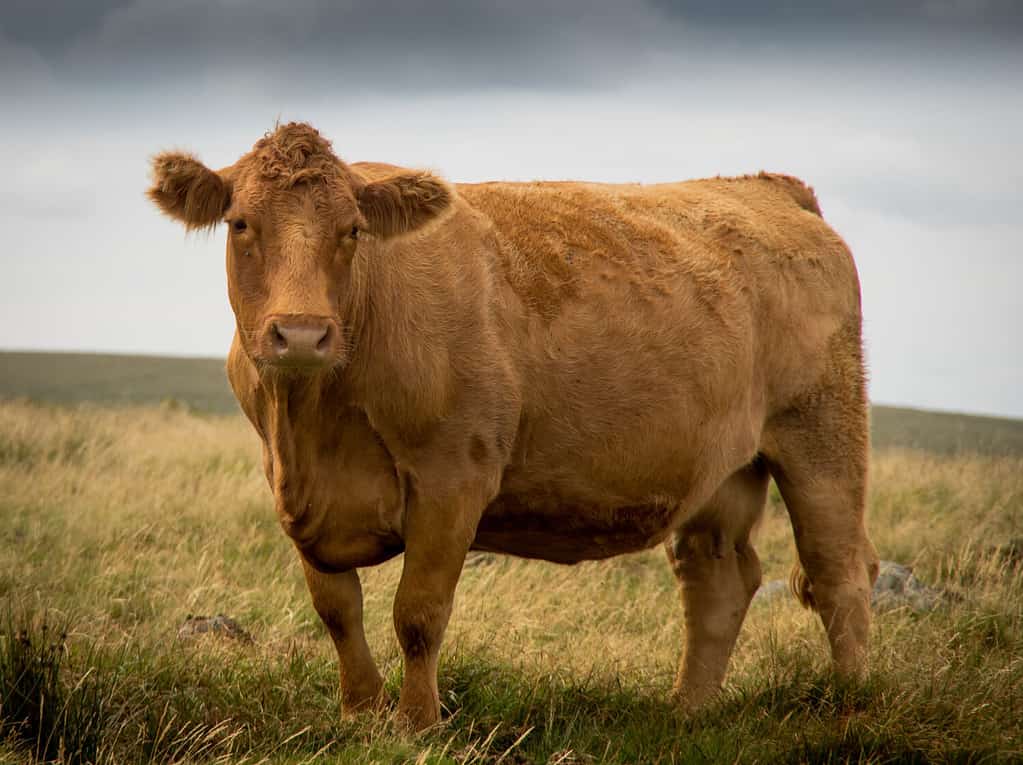
The cow is a domesticated descendent of wild ox.
©Dave Atkins/Shutterstock.com
21. Jay
A jay can refer to a number of medium-sized, often colorful and vocal, species within the crow family, Corvidae. In North America, there are 10 species of jays. The most familiar species is likely the blue jay (Cyanocitta cristata). Other North American species include the Steller’s jay (Cyanocitta stelleri), the Florida scrub jay (Aphelocoma coerulescens), and the green jay (Cyanocorax yncas). These highly intelligent birds are experts at mimicking, have complex social relationships, and can use tools.

Jays, like their close relative, crows, are highly intelligent, talkative, and can use tools.
©dimostudio/Shutterstock.com
22. Moa
The moa, of the Dinornithiformes order, represents a group of extinct flightless birds that were native to New Zealand. These extremely large, ostrich-like flightless birds lived for millions of years, but died out about 600 years ago due to hunting by humans and habitat changes. The South Island giant moa (Dinornis robustus) was the tallest-known bird species to ever exist. At the highest point of their back, this species of moa stood up to 6.5 feet tall and could reach foliage up to 11 feet, 10 inches off the ground.

The moa is an extinct flightless bird, once native to New Zealand.
©Lakeview Images/Shutterstock.com
23. Yak
The wild yak (Bos mutus), the last on our list of three-letter animals, is a cold-loving ungulate native to the Himalayan Mountains of Nepal and Tibet. Both domestic (Bos grunniens) and wild yak species exist today, with the latter often growing much larger. A wild male yak can weigh up to 2,200 pounds. In the wild, they inhabit grasslands and alpine tundra regions.
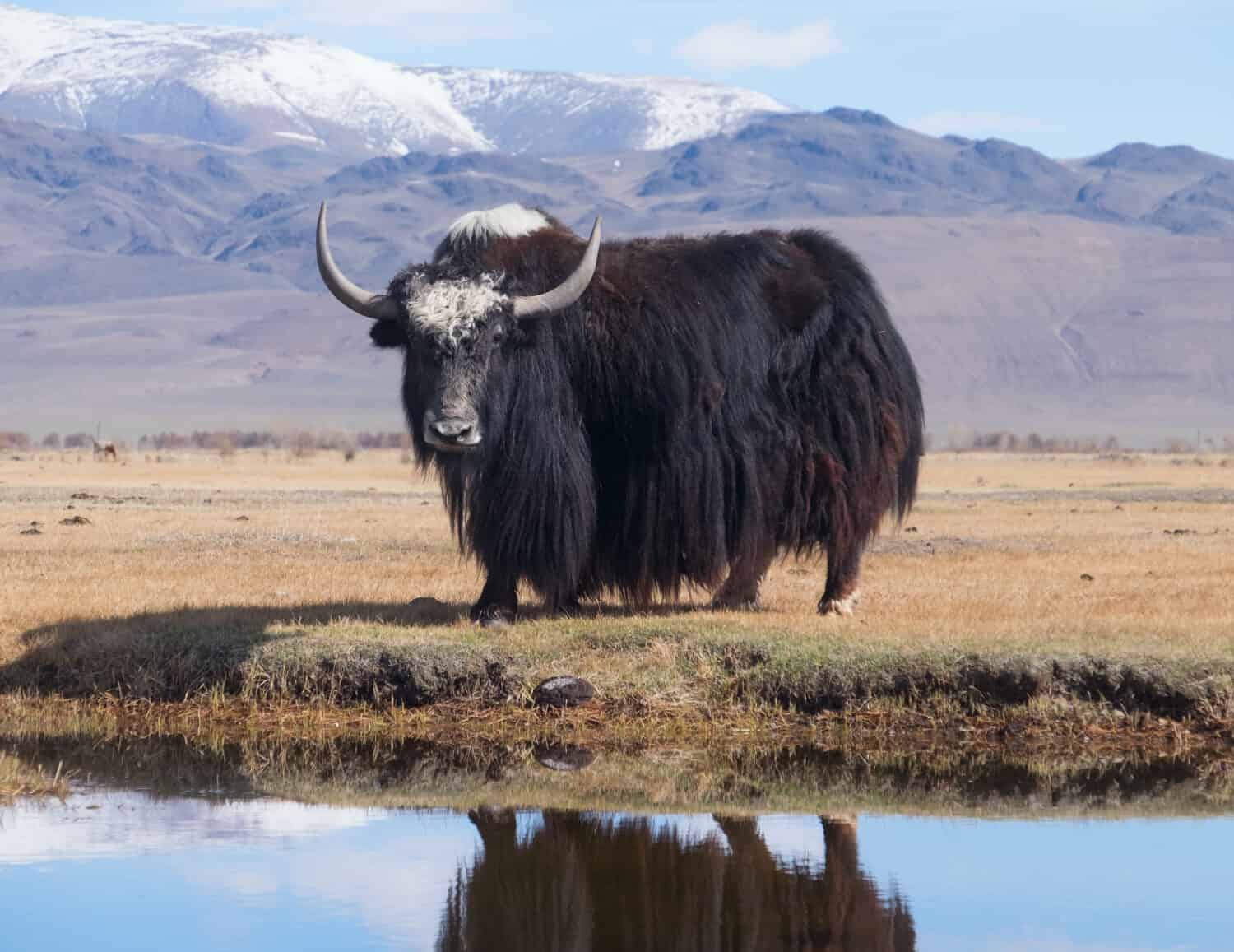
Both domestic and wild species of yak exist today. Wild yaks can reach enormous sizes, weighing up to 2,200 pounds.
©aleksander hunta/Shutterstock.com
| Number | Animal Name |
|---|---|
| #1 | Cat |
| #2 | Pig |
| #3 | Ram |
| #4 | Bat |
| #5 | Gnu |
| #6 | Ray |
| #7 | Fox |
| #8 | Ant |
| #9 | Rat |
| #10 | Cod |
| #11 | Dog |
| #12 | Elk |
| #13 | Bee |
| #14 | Olm |
| #15 | Fly |
| #16 | Eel |
| #17 | Asp |
| #18 | Owl |
| #19 | Ide |
| #20 | Cow |
| #21 | Jay |
| #22 | Moa |
| #23 | Yak |
The photo featured at the top of this post is © Jessie Lynn Croft/Shutterstock.com
Thank you for reading! Have some feedback for us? Contact the AZ Animals editorial team.







